Entry tags:
Cleveland Way: Staithes to Robin Hood's Bay
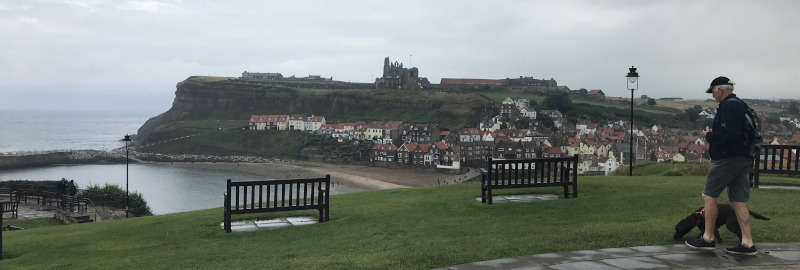
Whitby
18 miles/30 km
The weather forecast for today was ominous. Sufficiently ominous that I was looking into escape routes and querying whether it was entirely wise to walk a cliff top path during a thunderstorm. B. persuaded me that the forecast wasn't that dire and, indeed, although the little weather symbol had lightening flashes on it, it looked like the wind speed wouldn't be that high. We did get quite damp, but mostly the weather was just a bit cloudy and dingy, with drizzle from time to time, and actual rain about twice.
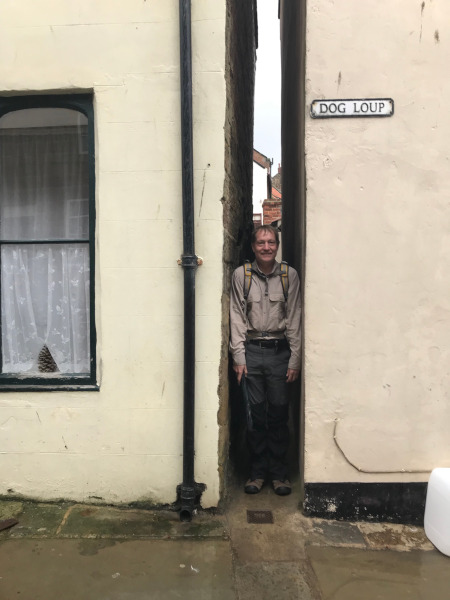
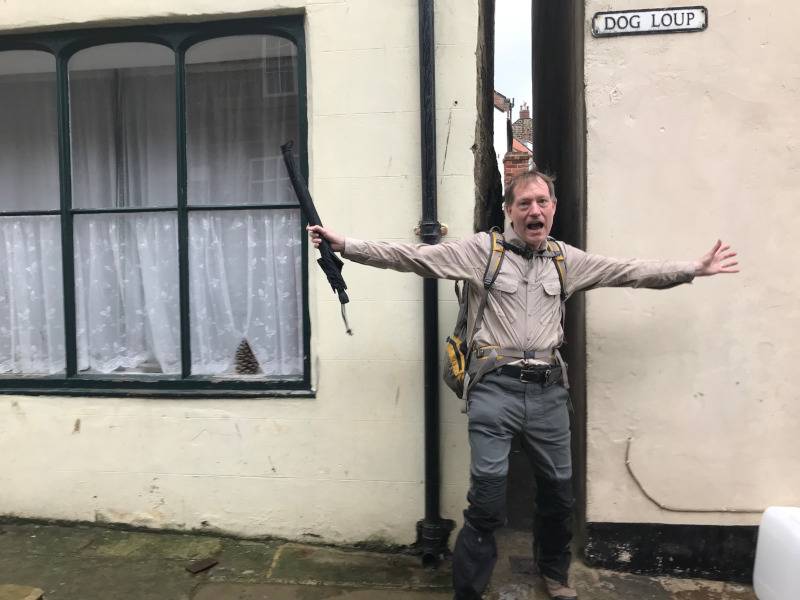
Before leaving Staithes we stopped to admire Dog Loup which is apparently the narrowest alley in the country.
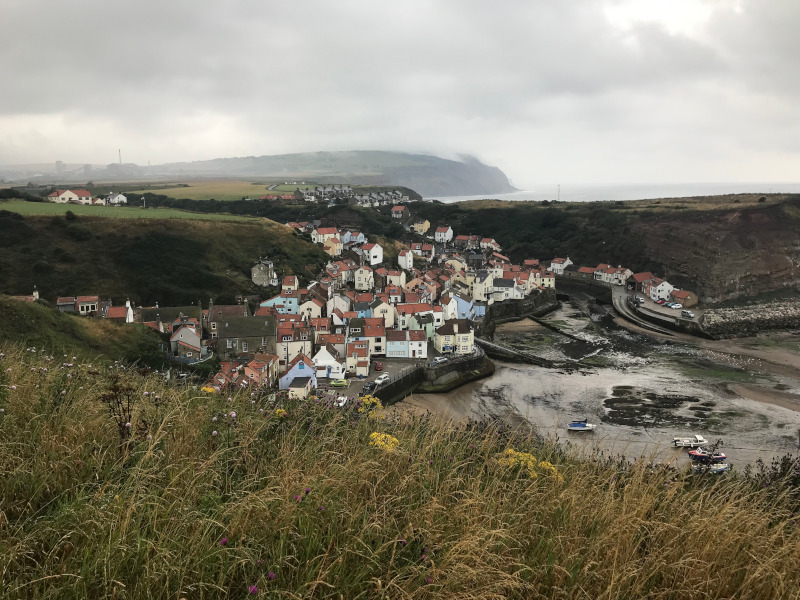
Staithes really is ridiculously pretty.
This stretch of coast wasn't quite as spectacular as the Saltburn to Staithes stretch, which was perhaps as well since we had further to walk and the weather while mostly OK for walking did not encourage one to stop and admire the scenery.
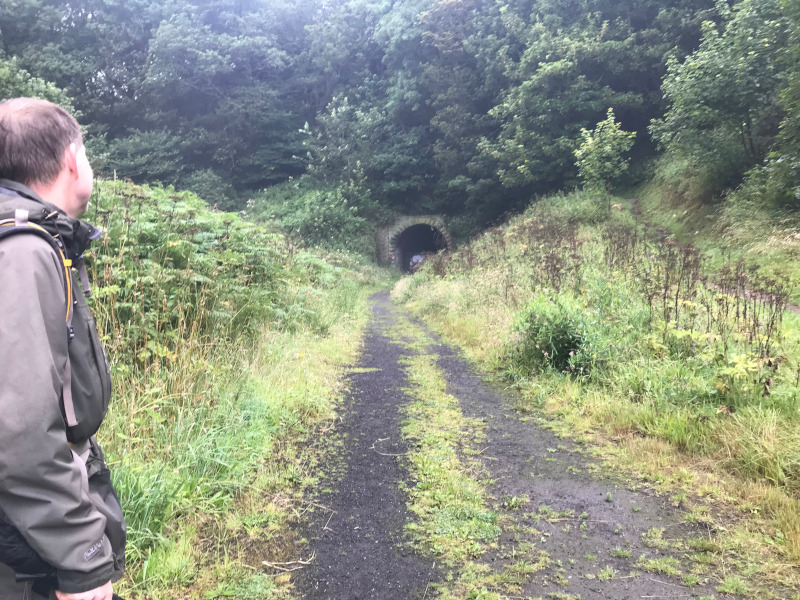
Part of the route was along the old coastal railway. We didn't actually walk through this tunnel which was boarded up (though B. was tempted). As far as we could make out the railway ran between the various alum and ironstone quarries and the coastal fishing villages.
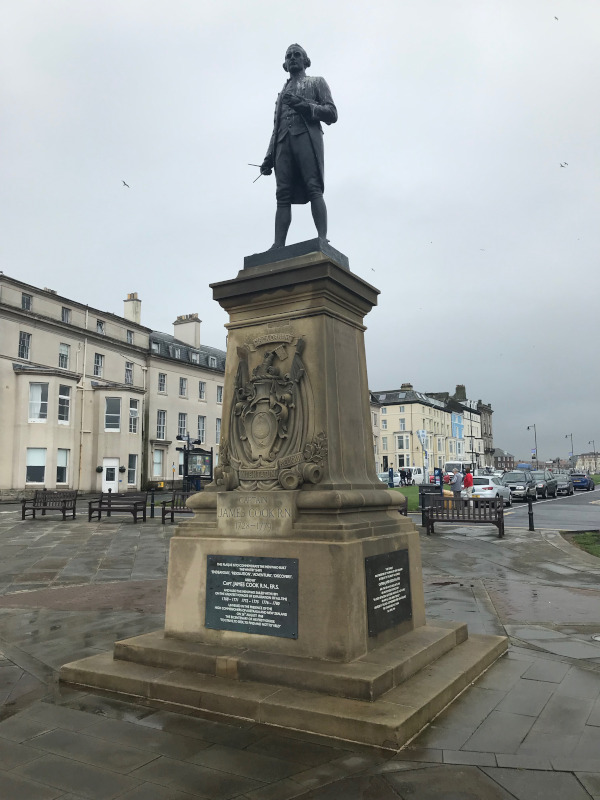
Captain Cook is a prominent local figure, having lived in both Staithes and Whitby.
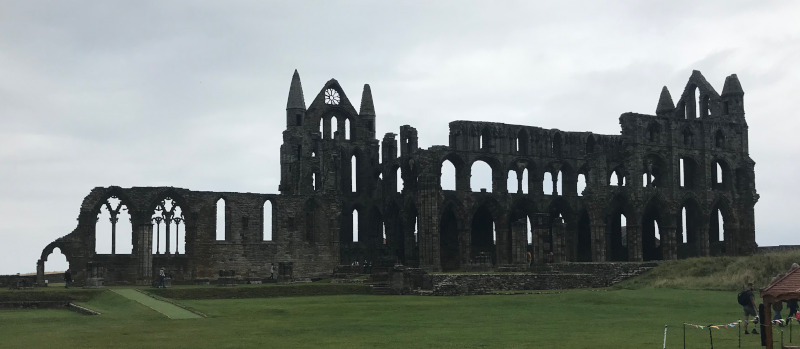
Whitby Abbey is on the Cleveland Way so we made use of our English Heritage membership to take a look around (and have coffee and cake in the tea shop). We resisted the temptation to buy Dracula themed tat in the shop.
Whitby seafront was heaving, even on a wet Wednesday. I should really have taken some photos of its combination of coffee stands, shellfish stands and slot machine arcades, but at the time I was urgently seeking a cafe with indoor seating where I could have a bit of rest. All the coastal places on the walk, however, have been interesting mixtures of current seaside attraction, but with a recent industrial/fishing past.
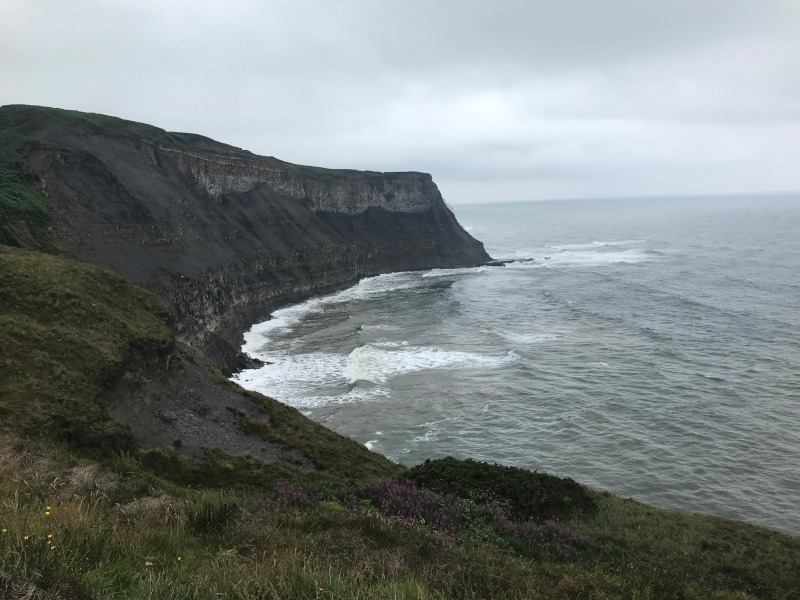
This was somewhere between Whitby and Robin Hood's Bay. Lots of the coast looks like this, but we had a particularly good view just here.
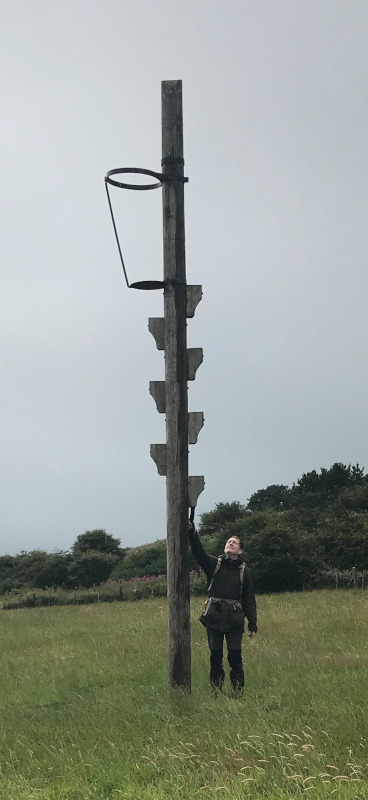
This is a rocket post. It took us a while to figure out exactly how it worked from the description in the guide book but a nearby info board provided enlightenment. It was used to help the coastguard practice a particular kind of ship to shore rescue. A rocket would be fired to the ship containing a line and then sailors would be removed using a `breeches buoy' - more or less a pair of shorts attached to a ring. The rocket posts were used to practice this with someone climbing up the post to pretend to be a stranded sailor on a ship.